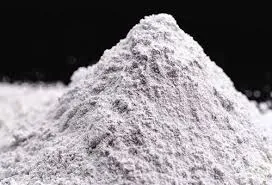
ጥቅም . 16, 2024 01:42 Back to list
Hydroxypropyl Methyl Cellulose CAS Number and Its Applications in Various Industries
Hydroxypropyl Methylcellulose Properties, Applications, and Significance
Hydroxypropyl methylcellulose (HPMC) is a versatile cellulose ether that has gained widespread application across various industries, including pharmaceuticals, food, cosmetics, and construction. This compound is derived from cellulose, a natural polymer found in the cell walls of plants, and is synthesized through a series of chemical reactions. The unique properties of HPMC make it an essential ingredient in numerous formulations, ranging from dietary supplements to construction materials.
Chemical Structure and Properties
HPMC is characterized by its hydroxypropyl and methyl substituents attached to the cellulose backbone. The degree of substitution can vary, influencing properties such as solubility and viscosity. The CAS number for HPMC is 9004-65-3, which facilitates its identification in chemical databases. HPMC is a white, odorless powder that is soluble in water, forming a clear gel-like solution upon dispersion. This solubility is temperature-independent, making it useful in a variety of applications.
One of the most significant properties of HPMC is its ability to form films and gels, which makes it essential in the formulation of controlled-release pharmaceutical products. It acts as a thickening agent, stabilizer, and emulsifier, enhancing the texture and performance of products. Additionally, HPMC is non-toxic, biodegradable, and has low allergenic potential, which makes it a safe choice for both food and pharmaceutical applications.
Applications in Pharmaceuticals
In the pharmaceutical industry, HPMC is commonly used as an excipient in tablet formulations. It aids in controlling the release rate of active ingredients, ensuring that they are delivered effectively over time. For instance, in sustained-release formulations, HPMC helps in creating a barrier that prevents rapid dissolution of the drug, thereby prolonging its therapeutic effect.
Moreover, HPMC is utilized in the production of capsules, where it serves as a vegetarian alternative to gelatin. This feature is particularly important in the growing market for vegetarian and vegan products. HPMC capsules provide a stable environment for active ingredients and can improve bioavailability.
Another notable application of HPMC in pharmaceuticals is in topical formulations. It acts as a film-forming agent, enhancing the spreadability and adherence of creams and gels on the skin. Its hydrophilic nature allows for improved moisture retention, making it beneficial in moisturizing products.
hydroxypropyl methyl cellulose cas number

Role in Food Industry
In the food industry, HPMC is recognized as a food additive, often labeled as E464. It serves as a thickener, emulsifier, and stabilizer, enhancing the mouthfeel and texture of various products. It is particularly prevalent in gluten-free formulations, where it mimics the elasticity and chewiness of gluten, improving the quality of baked goods.
HPMC is also used in sauces, dressings, and desserts to maintain viscosity and prevent separation. Its ability to bind moisture makes it advantageous in extending the shelf life of food products, ensuring that they remain fresh and appealing to consumers.
Importance in Construction Materials
The construction industry has also adopted HPMC for its exceptional binding and water-retention properties. It is commonly used in mortar and plaster formulations, enhancing workability and adhesion. The addition of HPMC to construction materials allows for extended open times, enabling workers to adjust and manipulate the material before it sets.
Furthermore, HPMC contributes to the durability and strength of building materials. Its water-retention capabilities ensure that the materials remain workable even in dry conditions, which is crucial for achieving optimal performance and longevity.
Conclusion
Hydroxypropyl methylcellulose is a remarkable compound with diverse applications across various sectors. Its unique properties, safety profile, and versatility make it a valuable ingredient in pharmaceuticals, food products, and construction materials. As industries continue to innovate and seek sustainable solutions, HPMC's role is likely to expand, underscoring its significance as a multifunctional additive in modern formulations. Whether enhancing drug delivery, improving food texture, or optimizing construction materials, HPMC stands out as a key player in the formulation landscape.
-
The Widespread Application of Redispersible Powder in Construction and Building Materials
NewsMay.16,2025
-
The Widespread Application of Hpmc in the Detergent Industry
NewsMay.16,2025
-
The Main Applications of Hydroxyethyl Cellulose in Paints and Coatings
NewsMay.16,2025
-
Mortar Bonding Agent: the Key to Enhancing the Adhesion Between New and Old Mortar Layers and Between Mortar and Different Substrates
NewsMay.16,2025
-
HPMC: Application as a thickener and excipient
NewsMay.16,2025
-
Hec Cellulose Cellulose: Multi functional dispersants and high-efficiency thickeners
NewsMay.16,2025







